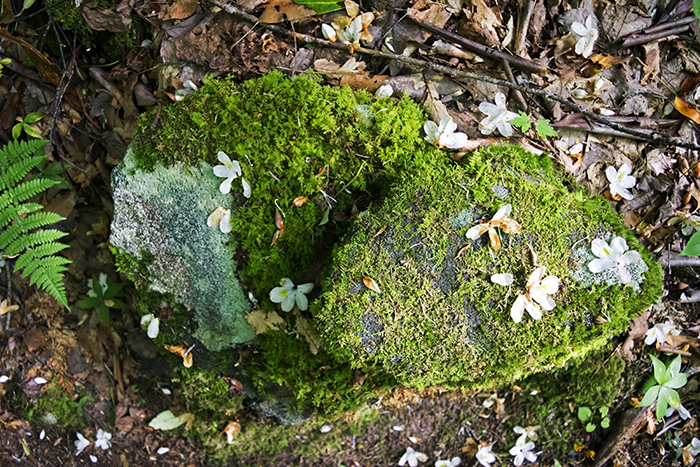An Introduction to the Art of Sweetgrass Basket Weaving
Lowcountry Region, South Carolina
by Cassia Reynolds
The swampy summer humidity engulfed me as I opened my car door and stepped out onto the edge of Highway 17. The sun bore down on the blacktop, radiating a heat I could feel through the soles of my sandals.
I crunched through the rough patches of grass and weeds that lined the road and made my way to the wooden stand on the forest fringe. It was surprisingly cool under the shade of the pine trees; an oasis on the open strip of asphalt between Georgetown and Charleston.
It was the first time I’d ever visited a sweetgrass basket stand. I’d passed them countless times, the open huts sprinkled along the otherwise barren roadside, the intricate, handwoven baskets hanging down from wooden beams and displayed on folding tables. I’d just never thought to stop, always assuming they were tourist traps.
I came across Arthuree Bennett’s stand on a mostly barren stretch of highway, further away from the larger towns where most other vendors congregate. Arthuree was leaned back in a plastic chair, feet propped up on one opposite her. She held a slender palm frond between the index and thumb of her left hand, and with her right she jammed the melted handle of a spoon through a tight loop of woven sweetgrass. Arthuree glanced up as I approached and nodded a hello, her fingers continuing to work.
Throughout the entire time I spoke with her, her hands never stopped moving.
I set up the interview with Arthuree’s back to the woods. After she sat down, she made me swear I’d watch for snakes. She was nervous about them, but thankfully no unwanted critters made any appearances during the 30 minutes we discussed sweetgrass basket weaving, Arthuree’s favorite creations, and the craft’s not-so-secure future.
Arthuree expressed to me a fear other weavers echoed: the knowledge of the art is in danger of dying out. There are two major components to this: 1) younger generations simply aren’t as interested in weaving as their elders and 2) materials are becoming more scarce.
Most of the sweetgrass, pine needles, and other plants that weavers use in the baskets are collected in the swamplands of Bluffton, SC. However, due to recent development of the area, these natural resources are becoming less available. Weavers are forced to pay more for less. The centuries-old tradition is becoming less appealing, less sustainable, and more difficult to continue.
A brief history. The art of sweetgrass basket weaving comes from the Gullah tradition, a pocket culture native to a small area on the southeast. Gullah people are descendants of enslaved West Africans brought to the Americas in the late 1600’s and early 1700’s. The Gullah community stretches between the coastal region of Jacksonville, North Carolina and Jacksonville, Florida, but the most concentrated populations are in the Lowcountry regions of South Carolina and Georgia, including the Sea Islands just offshore.
Gullah culture is a unique mesh of West African and Southern American tradition. It has its own food recipes, dances, singing-style, folklore, and language. The Gullah ancestors lived and worked on large rice plantations together, sharing traditions from many distinct African tribes. Over time, these practices blended. After the Civil War, many Gullah people stayed in the Lowcountry area, moving out to the little islands along the coast and the edges of the swamps. Here, they continued to live mostly in rural isolation, developing their own sustainable, nature-oriented lifestyle. (For more on the history of the Gullah people, check out A Clash of Cultures: The Landscape of the Sea Island Gullah.)
The same recent development of Gullah areas like Bluffton has led to devastation of this people’s hunting and foraging lands. And because their culture is so rooted in plants and animals indigenous to these areas, the loss is catastrophic to their livelihoods. In 2004, the National Trust for Historic Preservation named the Gullah Coast one of the 11 Most Endangered Historic Places.
People have tried to raise awareness through documentaries, folklore gatherings, and other fundraising events, but development is continuing. Arthuree taught her daughter the art of weaving in hopes to pass on the tradition. However, one person isn’t enough to stop the deterioration of an entire way of life. If nothing else is done, soon the Gullah culture may be confined only to museums, history books, and the rare basket found on a mantlepiece.
After learning so much about weaving and speaking with Arthuree, I bought a basket. It’s a miniature version of her favorite style, a funky, wavy creation she refers to as the Designer Basket. It’s a hardy, heavy thing.
When I hold the basket, I think about what Arthuree taught me. I know the dark spiral in the center is pine needle, that the palm looped through each layer of material was once a bright green, that all the ins and outs of this basket come from the same swamplands I visited for my marine biology class in high school. It’s a reminder that I share my homeland with many distinct lifestyles and I should take the time to get to know them.
If you’re interested in helping the Gullah people preserve their heritage, check out the Daufuskie Endangered Places Program, which is run by The Palmetto Trust for Historic Preservation. They have several donation and information programs.





















































